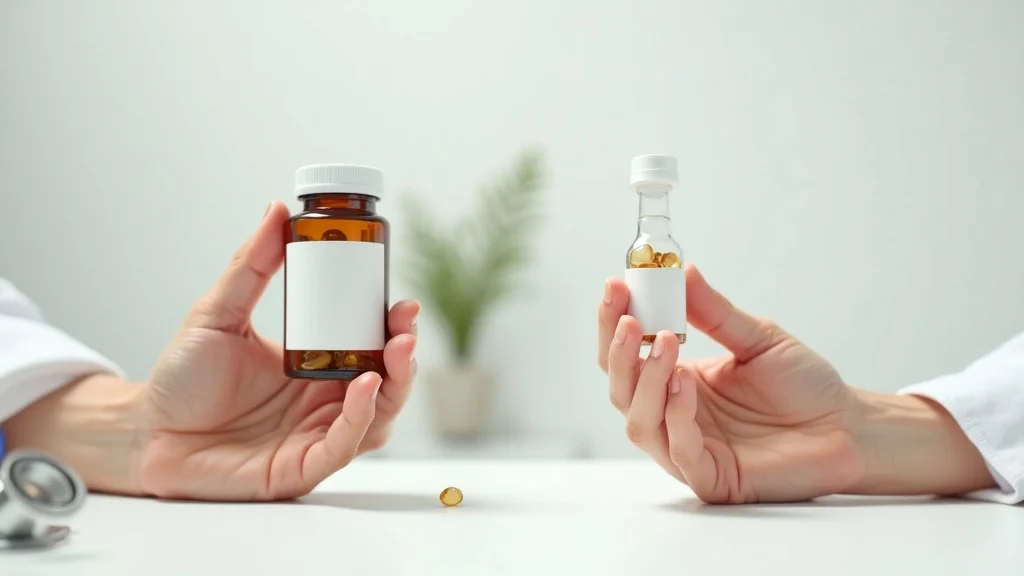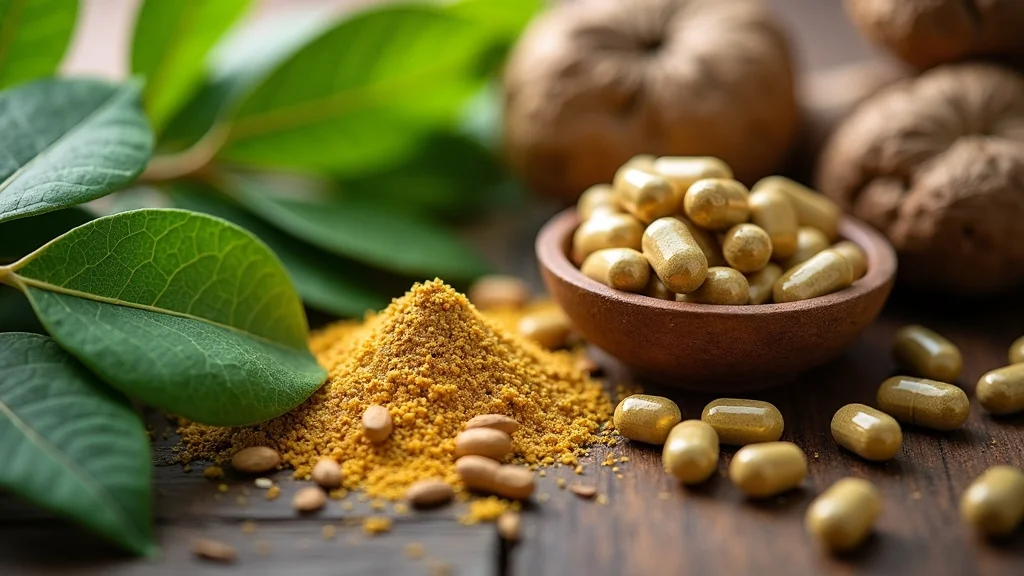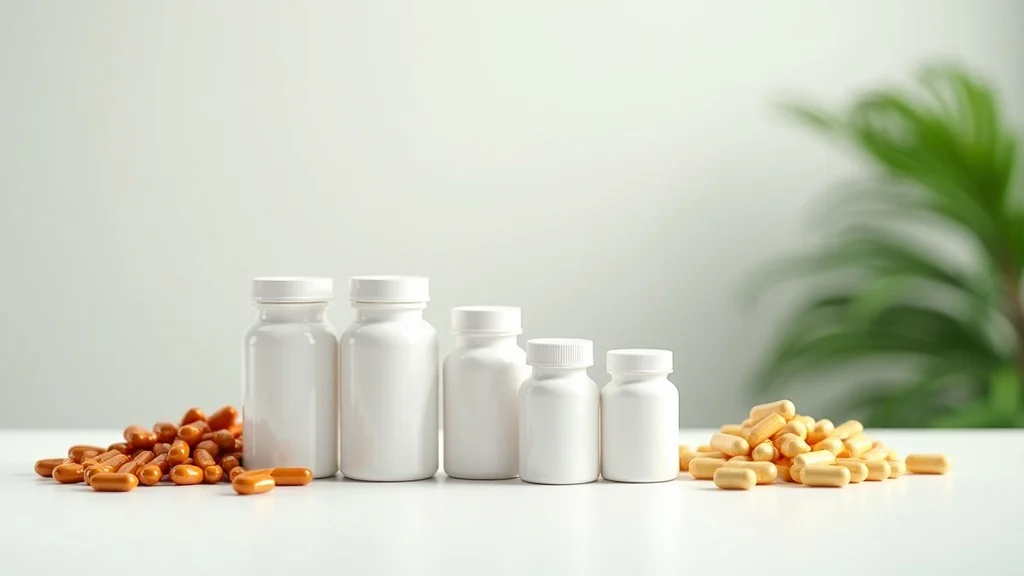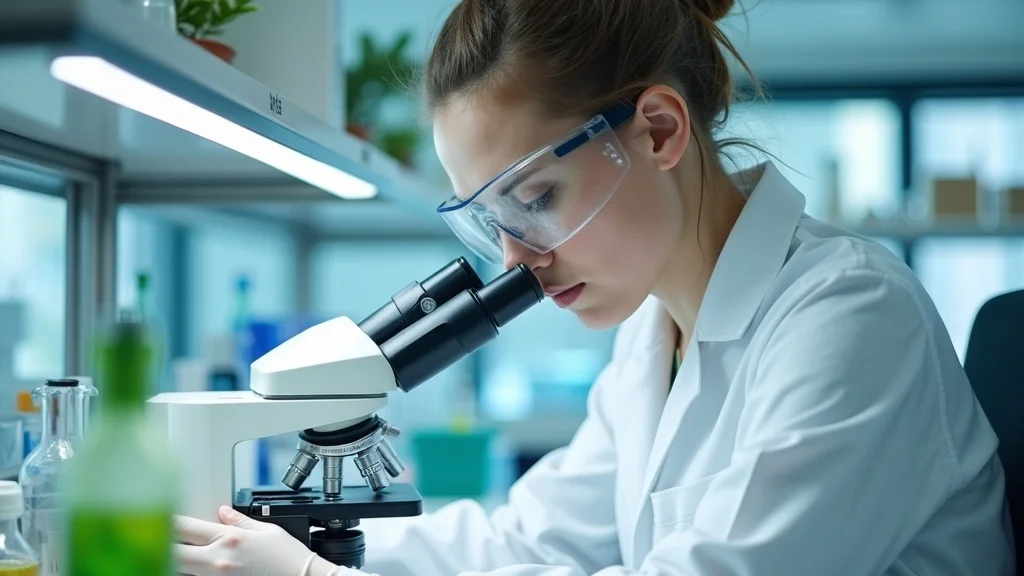Did you know that by age 30, testosterone levels start to drop by about 1% each year for both men and women? This stealthy decline can quietly zap your energy, reduce muscle mass, and affect your mood—sometimes before you even notice. In this guide, you’ll learn how evidence-based natural testosterone boosters can help you reclaim vitality quickly and safely. Armed with the latest research, we detail ingredients, lifestyle changes, and proven supplement options that work fast—empowering you to support hormonal health and well-being at every age.
Startling Facts About Natural Testosterone Boosters and Why Testosterone Matters for Both Men & Women
Testosterone is often misunderstood as solely a male hormone, but it’s a critical component in the health and well-being of both men and women. Not only does it underpin muscle mass and sex drive, but balanced testosterone levels are central to mental clarity, mood stability, and even bone density for all adults. What makes this hormone so crucial is its far-reaching effects: when your testosterone level drops, you might experience fatigue, irritability, or low motivation—symptoms that can easily be misattributed to stress or aging. The most effective natural testosterone boosters aim to restore these levels naturally, sidestepping the risks and side effects of synthetic testosterone treatments.
- The role of testosterone in both men and women: Testosterone shapes muscle development, supports metabolic function, and influences emotional and mental balance in everyone—not just men.
- Why healthy testosterone levels influence physical and mental well-being: Balanced hormone levels power your drive, bone strength, confidence, and resilience.
- Natural ways to increase testosterone levels quickly: Evidence-backed lifestyle tweaks, specific foods, and select supplements can make a substantial difference in a matter of weeks.
- The best ingredients in natural testosterone boosters: Look for plant-based compounds like fenugreek and ashwagandha.
- Potential side effects and safety tips: Learn which ingredients to use wisely and how to minimize unwanted side effects.
- How to avoid ineffective or risky testosterone boosters: Not all supplements are created equal; discover how to pick safe, scientifically validated formulas.

Understanding Testosterone Levels: Essential for Men & Women
Understanding your own testosterone levels is the first step toward optimizing health, as both low and high levels can have pronounced impacts on daily life. Both men and women produce testosterone—albeit in different amounts—and keeping these hormone levels within a healthy range is essential for feeling strong, energetic, and balanced. With the steady progression of age or heightened stress, shifts in testosterone level may manifest as subtle symptoms, prompting many to look for ways to increase testosterone levels naturally before considering medical therapies.
What Are Healthy Testosterone Levels?
The healthy range for testosterone levels varies by age, gender, and individual factors. For men, total testosterone is generally considered healthy between 300–1,000 ng/dL, but optimal testosterone level often lies near the higher end for vitality and muscle mass. Women’s healthy range is lower, typically 15–70 ng/dL, as even small imbalances can lead to a host of symptoms from mood swings to fatigue. Maintaining healthy testosterone levels supports bone density, energy, and a sharp mind, while suboptimal levels are linked to low motivation, diminished sex drive, and muscle mass loss. If you notice a drop in performance or a shift in well-being, it could be time to investigate your hormone levels and consider natural support.
Testosterone Level Differences Between Genders
Despite popular misconceptions, testosterone isn’t just a “male” hormone. Women produce smaller amounts, yet this hormone is no less vital. For men, fluctuations tend to show as loss of strength or sexual function; in women, low levels can trigger mood disorders, weakened bones, or even testosterone deficiency symptoms reminiscent of menopause. Women’s bodies are more sensitive to shifts, so subtle deficiencies might cause outsized effects. Ultimately, understanding your baseline testosterone level—whether through lab work or symptom tracking—makes it easier to decide if natural testosterone boosters are right for you, no matter your gender.
Symptoms of Low Testosterone in Both Sexes
Whether you’re a man experiencing a dip in athletic performance or a woman noticing reduced resilience or mood swings, recognizing signs of low testosterone is crucial to acting early. Men and women both may face challenges such as persistently low energy, trouble building muscle mass, a decrease in sex drive, irritability, poor focus, and weakened bones. Over time, low testosterone level can also result in disrupted sleep, hair loss, and changes in body fat. Being attuned to these subtle (symptoms of low testosterone) changes—and acting quickly with lifestyle choices or natural boosters—offers the best chance at restoring a healthy, vibrant feeling.
- Decreased sex drive or libido
- Unexplained fatigue and lack of motivation
- Reduced muscle mass and strength
- Weight gain around the midsection
- Mood swings, depression, or brain fog
- Sleep disturbances or insomnia
- Loss of bone density

Why Choose Natural Testosterone Boosters Over Synthetic Options?
When weighing ways to increase testosterone, it’s important to distinguish between natural testosterone boosters and synthetic alternatives. Natural options promote the body’s own ability to produce testosterone, leveraging ancient herbs, minerals, and vitamins with a proven track record and minimal side effect risk. In contrast, synthetic options, such as testosterone injections or patches, offer fast but sometimes disruptive results—often accompanied by significant side effects or regulatory oversight. Choosing a natural path supports overall well-being, targeting not just testosterone levels but hormonal balance as a whole.
Overview: Natural vs. Synthetic Testosterone Boosters
Natural testosterone boosters use ingredients such as fenugreek, ashwagandha, zinc, and vitamin D to gently nudge your own hormone production upwards. These supplements work in harmony with the body’s natural rhythms, resulting in more nuanced, lasting benefits and a lower risk profile. Synthetic testosterone, typically delivered via prescription as gels, patches, or injections, replaces natural hormone production but may disrupt your body’s feedback loops. Over time, reliance on synthetic forms can lead to dependency or further suppression of testosterone production. If you’re looking for a gentle, reliable way to bolster hormone health, leaning into natural testosterone support is often the smarter first choice.
Boosting Supplements: Evaluating Natural Testosterone Booster Safety and Efficacy
Not all boosting supplements are created equal. While many supplements claim to increase testosterone levels quickly, some lack scientific support—or worse, contain undisclosed synthetic compounds. The best natural testosterone booster supplements draw on clinical studies, offering evidence-based improvements in testosterone production and sexual function, with only mild, temporary side effects (if any). Those with known efficacy—through plant extracts and critical nutrients—are far less likely to cause dangerous spikes in hormone levels or long-term issues seen in synthetic hormone therapy. Always look for third-party testing, transparent labeling, and consult your healthcare provider before starting any new dietary supplement.
"Natural testosterone boosters offer a holistic approach that supports your body's hormonal balance without many of the side effects seen with synthetic testosterone." – Endocrinology Expert
| Feature | Natural Testosterone Boosters | Synthetic Testosterone |
|---|---|---|
| Source | Herbs, vitamins, minerals | Lab-created prescription hormones |
| How it works | Supports body’s own production | Direct hormone replacement |
| Risk of side effects | Low (if used properly) | Moderate to high |
| Dependency risk | None | Possible (suppresses own production) |
| Prescription needed | No | Yes |
| Long-term safety | High (with reputable brands) | Potential risks (cardiovascular, prostate) |

Natural Testosterone Boosters: Top Ingredients That Actually Work
If you’re seeking to boost testosterone levels naturally, it’s essential to focus on ingredients proven in clinical trials. Popular herbal testosterone booster compounds have centuries of use, as well as modern evidence showing real gains in testosterone production, sexual function, and even mood. Knowing which to choose—like fenugreek, ashwagandha, and D-aspartic acid—can help you avoid ineffective or untested pills on the market.
Herbal Testosterone Booster Ingredients Backed by Research
Not all great-sounding ingredients are backed by robust science, but these are:
- Fenugreek: Shown in multiple trials to support testosterone levels, physical performance, and sex drive.
- Ashwagandha: Traditional adaptogen proven to reduce stress hormone levels and gently increase natural testosterone production.
- D-Aspartic Acid: An amino acid vital for the synthesis and release of testosterone in both men and women.
- Zinc & Magnesium: These minerals are key for enzymatic reactions that produce testosterone and maintain a healthy testosterone level.
- Vitamin D: Deficiency is linked to low testosterone; supplementation drives hormone levels back toward optimum.
How These Ingredients Increase Testosterone and Support Healthy Levels
Each of these ingredients plays a unique role in helping the body naturally increase testosterone. Fenugreek may reduce the conversion of testosterone to estrogen, freeing up more usable hormone. Ashwagandha decreases cortisol, a stress hormone that can suppress testosterone production. D-aspartic acid boosts the release of luteinizing hormone, signaling more testosterone creation. Meanwhile, zinc and magnesium fill common nutritional gaps that may otherwise lead to low testosterone levels, especially in active adults. Together, these compounds not only help raise testosterone levels naturally, but also promote overall health and resilience.
- Stimulates the body’s own testosterone production pathways
- Helps maintain healthy testosterone levels even during stress or aging
- Can improve sexual function, energy, motivation, and physical performance
- Supports metabolic and emotional well-being through gentle hormonal balance

How to Increase Testosterone Naturally: Evidence-Based Methods
Optimizing your testosterone level is about more than just taking a supplement—it’s about crafting a healthy lifestyle that supports hormonal resilience. Lifestyle interventions such as sleep hygiene, resistance training, and mindful eating are all proven levers for improving testosterone production. Combining smart habits with select dietary supplement options can speed your results and help you maintain healthy testosterone levels for the long haul.
Lifestyle Changes for Increasing Testosterone Levels
Research shows that simple daily habits hold remarkable power for raising your testosterone level without synthetic products. Prioritizing quality sleep (7–9 hours nightly) is foundational, as most testosterone is produced during deep sleep cycles. Regular strength training and high-intensity exercise are directly linked to higher testosterone levels, muscle gain, and even improved sex drive. Managing stress through mindfulness, meditation, or yoga can limit cortisol spikes that decrease testosterone production. And, naturally, a nutrient-rich diet—high in whole proteins, healthy fats, and micronutrients—grounds all these efforts, providing the building blocks for long-term success.
- Optimizing sleep
- Strength training & exercise
- Stress reduction techniques
- Diet and nutrition essentials
Dietary Supplement and Testosterone Production: Do Testosterone Supplements Help?
Many testosterone supplements on the market claim to increase testosterone levels quickly, but only those with established, research-backed ingredients are worth considering. Look for supplements featuring clinically dosed fenugreek, D-aspartic acid, or ashwagandha—these have been shown to improve testosterone production or counter signs of low testosterone in multiple peer-reviewed studies. Coupled with a healthy lifestyle, these supplements can help you regain vigor while minimizing the risk of side effects associated with inappropriate or poorly formulated boosters.
What Drink Boosts Testosterone?
Emerging research highlights several beverages that may provide a natural uplift to testosterone. Notably:
- Pomegranate juice: Rich in antioxidants, this drink has been linked to improved blood flow, mood, and minor increases in testosterone levels.
- Green tea: Contains catechins that support metabolic health and hormonal balance.
- Beetroot juice: Boosts nitric oxide, supporting both blood flow and hormone delivery.

Best Natural Testosterone Boosters: Ranking Leading Supplements and Dietary Approaches
Thousands of testosterone booster products claim fast results, but only a handful stand out for safety, efficacy, and value. Comparing these options head-to-head helps you choose a dietary supplement that aligns with both your needs and scientific evidence—delivering real increases in testosterone levels and energy.
Boosting Supplements: Dietary Supplement Rankings for Increasing Testosterone
In this section, we rank top natural testosterone boosters available on the market. We considered factors like active ingredient amounts, clinical support, third-party testing, and cost-effectiveness:
| Supplement | Main Ingredients | Effectiveness | Cost per Month |
|---|---|---|---|
| Performance Blend A | Fenugreek, Ashwagandha, Zinc, Vitamin D | Highly effective for most users; rapid improvements in energy and mood | $$ |
| Herbal Fusion B | D-Aspartic Acid, Magnesium, Ashwagandha | Moderate improvement in testosterone levels; suitable for both sexes | $$$ |
| Essential Minerals C | Zinc, Magnesium, Vitamin B6 | Best for maintenance; supports recovery and hormone balance | $ |
How to Choose a Safe and Effective Natural Testosterone Supplement
With so many testosterone booster options available, it’s vital to pick those with transparency and evidence behind their claims. Safety, efficacy, and your unique health goals should always come first. Use this checklist when evaluating products:
- Look for third-party tested supplements
- Verify ingredient dosages match research levels
- Steer clear of formulas with unlisted “proprietary blends”
- Avoid products with undisclosed synthetics or hormonal analogs
- Read user and expert reviews
- Consult your healthcare provider before starting a new dietary supplement

Side Effects and Safety With Natural Testosterone Boosters
While natural testosterone boosters are generally safe, especially when compared to synthetic alternatives, it’s important to be informed of possible side effects. Commonly reported issues—generally mild and short-lived—include digestive upset, sleep pattern changes, or brief hormonal fluctuations. Rare cases might involve interactions with medications or underlying health conditions, so awareness and medical guidance are key when adding any boosting supplements to your routine.
Are There Side Effects With Natural Testosterone Boosters?
The most frequent side effects experienced with reputable natural testosterone boosters are mild: transient stomach upset or mild insomnia if taken close to bedtime. Rarely, excessive intake may trigger hormone imbalances or interact with prescription medications—highlighting the importance of sticking to recommended doses. Unlike synthetic testosterone, natural formulas avoid risks such as cardiovascular strain, prostate issues, or deep suppression of your own hormone production. For those managing chronic health conditions, always confirm with your doctor before trying a new testosterone booster.
- Digestive upset
- Sleep changes
- Hormonal fluctuations
- Medication interactions
Reducing Risks: Tips for Safe Use of Natural Testosterone Boosters
To minimize side effect risk and encourage the best possible results, always select testosterone boosters from reputable brands, favoring those with full transparency, proven research, and third-party quality controls. Carefully follow label instructions, check for possible medication interactions, and start with the lowest recommended dose. Prioritize supplements that complement a healthy lifestyle—don’t rely solely on pills to address symptoms of low testosterone. And, above all, listen to your body: stop use if you experience unwanted reactions.

Real Results: Do Any Natural Testosterone Boosters Actually Work?
A growing body of research confirms that select natural testosterone boosters can reliably support testosterone production and restore more youthful hormone levels—particularly in those with mild to moderate deficiencies. Fenugreek and ashwagandha have been shown to raise testosterone levels and enhance sexual function in both sexes, while vitamin D and zinc supplementation are often effective for those deficient in these nutrients. However, each body responds differently, and results may be “modest yet meaningful,” leading to better mood, increased energy, and renewed drive rather than radical overnight change.
"Clinical studies show that certain natural ingredients can provide modest yet meaningful improvements in testosterone levels and overall vitality." – Clinical Research Pharmacist

Spotlight: Low Testosterone — Understanding the Symptoms and What to Do Next
If you suspect low testosterone may be at the root of your fatigue, loss of motivation, or changing body composition, taking action is vital. Getting lab work to confirm a low testosterone level, discussing symptoms with your provider, and reviewing your medications or lifestyle are the best starting steps. Many people see meaningful improvements by addressing diet, sleep, and natural testosterone boosters—reserving more intensive options for stubborn cases.
Symptoms of Low Testosterone and When to Seek Help
Classic signs of low testosterone levels include persistent tiredness, waning sex drive, diminished muscle mass, increased body fat, and mood disruptions. Less commonly discussed are issues like poor bone density (especially in women) or higher rates of depression. If you notice these effects for several weeks—and especially if healthy lifestyle changes haven’t helped—consult a medical expert for comprehensive testing and guidance.
- Ongoing low energy and apathy
- Reduced sexual function
- Unexplained muscle weakness
- Mental fuzziness and lack of focus
- Slow recovery from exercise or injury
- Mood instability or persistent sadness
Testosterone Replacement vs. Natural Testosterone Boosters
For individuals with severe testosterone deficiency or underlying medical causes, prescription testosterone replacement may be the better option. Yet for most adults—or those with mild symptoms—natural testosterone boosters offer a safer alternative without dependency risk or harsh side effects. Your healthcare provider can help weigh these choices, ensuring the approach aligns with your personal health history and goals.
| Approach | Pros | Cons |
|---|---|---|
| Natural Boosters | Low risk, gentle; supports body’s own hormone production; suitable for most | Results may be gradual or less pronounced in severe deficiency |
| Testosterone Replacement | Immediate effect; prescription monitored | Higher risk of side effects; may suppress natural production |

People Also Ask About Natural Testosterone Boosters
How can I increase my testosterone levels naturally?
To increase testosterone levels naturally, combine healthy lifestyle habits—like regular weight lifting, high-quality sleep, and stress management—with a diet high in protein, healthy fats, and micronutrients like zinc and vitamin D. Consider evidence-based dietary supplement options such as fenugreek, ashwagandha, or D-aspartic acid supplements, and stay physically active. Limit processed foods and excess alcohol, avoid chronic sleep deprivation, and get outside for sunshine whenever possible. These steps together will help maintain a healthy testosterone level and overall vitality.
What drink boosts testosterone?
Research points to drinks such as pomegranate juice, green tea, and beetroot juice as potential testosterone boosters. Pomegranate juice boosts testosterone levels by supporting cardiovascular health and reducing stress. Green tea and beetroot juice also enhance nitric oxide and antioxidant capacity, both linked to improved hormone levels and energy. Incorporate these drinks into your daily routine as part of a balanced approach using natural testosterone boosters.
Do any natural testosterone boosters actually work?
The scientific evidence supports that certain natural testosterone boosters—notably those containing fenugreek, ashwagandha, and vitamin D—deliver real if moderate improvements in testosterone production. To find supplements that work fast and safely, focus on those with clinical research, transparent labeling, and recommended dosing. Remember, the most sustainable gains come from blending dietary supplement use with a broader lifestyle approach.
Frequently Asked Questions on Natural Testosterone Boosters
- Are natural testosterone boosters safe for long-term use? Most are safe for long-term use if sourced from reputable suppliers and used as directed. Always monitor your body’s response and check with your doctor.
- Can women use natural testosterone boosters safely? Yes, but it’s best for women to choose formulas designed for their needs and consult a healthcare professional before use.
- How quickly do natural testosterone boosters take effect? Many users notice changes in energy or drive within 2–4 weeks, though results vary depending on individual baseline levels and consistency of use.
- What is the difference between a testosterone booster and replacement therapy? Boosters gently nudge your body to increase natural testosterone production, while replacement therapy introduces external testosterone and requires medical supervision.
- Do I need a prescription for natural testosterone boosting supplements? No—natural testosterone boosters are available over-the-counter, but medical advice is recommended for those with existing health conditions.
Key Takeaways: Natural Testosterone Boosters at a Glance
- Testosterone is essential for both men and women’s health, shaping energy, mood, and bone density
- Natural testosterone boosters provide a safer option to increase testosterone levels than synthetic therapies
- Ingredients like fenugreek, ashwagandha, vitamin D, and zinc are research-backed and effective
- Lifestyle changes—proper sleep, nutrition, and strength training—are the foundation for healthy hormone levels
- Watch for mild side effects and always select reputable, third-party tested supplements
- If symptoms of low testosterone persist, consult a healthcare provider to discuss further options

Final Thoughts on Natural Testosterone Boosters: Building a Stronger You, Naturally
Balanced testosterone levels are crucial for vitality, confidence, and health in both men and women. Natural testosterone boosters offer a safe, holistic path to re-energize life without harsh side effects. Consider professional guidance for personalized plans and consult with your health provider before starting any supplement.

 Add Row
Add Row  Add
Add 




Write A Comment